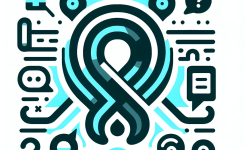A Gantt chart is a visual representation of a project schedule. It provides a clear overview of the start and end dates of various tasks, as well as their dependencies. This graphical tool has been widely used in project management for decades due to its simplicity and effectiveness. By using a Gantt chart, project managers can easily communicate the project plan to team members, stakeholders, and clients. It helps everyone involved in the project to understand what needs to be done, when it should be completed, and how different tasks are related to each other.
The Gantt chart was developed by Henry Gantt in the early 20th century. Since then, it has evolved and adapted to modern project management needs. Today, with the help of advanced project management software, creating and maintaining a Gantt chart has become much more convenient. These software tools offer a range of features such as task scheduling, resource allocation, and progress tracking, which enhance the functionality of the Gantt chart. Whether it is a small-scale project or a large and complex one, a Gantt chart can serve as a crucial tool for project planning and control.
In essence, a Gantt chart is like a roadmap for a project. It shows the journey from the project's start to its completion, highlighting all the important stops along the way. It allows project managers to anticipate potential problems, allocate resources effectively, and ensure that the project stays on track. Without a well-designed Gantt chart, a project may face disorganization, missed deadlines, and inefficient resource utilization. Therefore, understanding how to create and use a Gantt chart accurately is essential for successful project management.
Key Elements of a Gantt Chart
The first key element of a Gantt chart is the tasks. Tasks are the individual activities that need to be completed within the project. Each task should be clearly defined and have a specific start and end date. When listing tasks, it is important to break them down into manageable units. For example, in a software development project, instead of having a single task called "Develop software," it could be broken down into tasks like "Design user interface," "Write code for modules," and "Conduct software testing." This level of detail helps in better planning and tracking of the project.
Dependencies are another crucial element. Dependencies define the relationships between different tasks. A task may depend on the completion of another task before it can start. For instance, in a construction project, the task of installing the roof cannot start until the walls have been built. Identifying and representing these dependencies accurately in the Gantt chart is vital. It helps in sequencing tasks correctly and avoiding situations where a task is started prematurely, which could lead to rework and delays.
Resources are also an important part of a Gantt chart. Resources can include human resources, equipment, and materials. Allocating the right resources to each task is necessary for its successful completion. When creating a Gantt chart, project managers need to consider the availability of resources. If there are limited resources, it may affect the project schedule. For example, if there are only two painters available for a painting project, the tasks related to painting may need to be scheduled accordingly to ensure that the work is completed within the expected time frame.
Steps to Create an Accurate Gantt Chart
The first step in creating an accurate Gantt chart is to define the project scope. This involves clearly understanding what the project aims to achieve, what deliverables are expected, and any constraints or limitations. By having a well-defined scope, project managers can identify all the tasks that need to be included in the project. For example, if the project is to organize a conference, the scope would include tasks such as venue selection, speaker invitation, marketing, and event logistics.
Once the scope is defined, the next step is to break down the project into smaller tasks. This process, known as work breakdown structure (WBS), helps in making the project more manageable. Each task should be specific, measurable, achievable, relevant, and time-bound (SMART). For instance, instead of a broad task like "Prepare marketing materials," it could be broken down into tasks like "Design brochures," "Write press releases," and "Create social media posts." This level of detail makes it easier to estimate the time and resources required for each task.
After breaking down the tasks, the next step is to estimate the duration of each task. This requires considering various factors such as the complexity of the task, the availability of resources, and any potential risks. Project managers can use historical data from similar projects, expert judgment, or three-point estimation techniques to estimate task durations. For example, if a task has been done in 5 days in a previous project and the current project has similar requirements, the duration can be estimated as 5 days, but with some buffer time to account for any unforeseen circumstances.

Using Gantt Chart for Progress Control
A Gantt chart serves as an excellent tool for monitoring project progress. By comparing the actual progress of tasks with the planned schedule, project managers can quickly identify any deviations. For example, if a task was supposed to be completed by a certain date but has not started yet, it is a clear sign that there may be issues. This allows project managers to take corrective actions promptly. They can investigate the reasons for the delay, such as lack of resources or unexpected problems, and come up with solutions to get the project back on track.
In addition to tracking progress, a Gantt chart can also be used to manage resources. As the project progresses, project managers can see if the allocated resources are being utilized effectively. If a particular resource is over-allocated or under-allocated, adjustments can be made. For example, if a team member is assigned to multiple tasks simultaneously and is falling behind, some tasks may need to be reallocated to other team members to ensure that all tasks are completed on time.
Moreover, a Gantt chart helps in communicating the project status to stakeholders. Stakeholders, such as clients, investors, and senior management, may not be involved in the day-to-day operations of the project. However, they need to be informed about the progress. A Gantt chart provides a visual and easy-to-understand representation of the project's status. It shows which tasks are completed, which are in progress, and which are behind schedule. This transparency builds trust among stakeholders and keeps them informed about the project's health.
Challenges in Gantt Chart Making and Solutions
One of the common challenges in Gantt chart making is inaccurate task estimation. Estimating the duration and resources required for each task can be difficult, especially for complex projects. If the estimates are too optimistic, the project may fall behind schedule, while overly pessimistic estimates can lead to inefficient resource utilization. To address this challenge, project managers can use techniques like historical data analysis, involving subject matter experts in the estimation process, and using three-point estimation methods that consider the best-case, worst-case, and most likely scenarios.
Another challenge is dealing with changes during the project. Projects often face changes in requirements, scope, or schedule. These changes can disrupt the original Gantt chart. To handle changes, project managers should have a change management process in place. When a change is proposed, it should be evaluated for its impact on the project schedule, resources, and budget. The Gantt chart should then be updated accordingly to reflect the new situation. This ensures that the project remains on track despite the changes.
Maintaining the Gantt chart in real-time can also be a challenge, especially in large projects with many tasks and team members. If the Gantt chart is not updated regularly, it may become inaccurate and lose its effectiveness as a progress control tool. To overcome this, project managers can use project management software that allows for easy and automated updates. Team members can also be trained to report their progress regularly, ensuring that the Gantt chart always reflects the current state of the project.
Conclusion
In conclusion, Gantt chart making is an essential skill for project managers. It provides a visual and effective way to plan, schedule, and control projects. By accurately defining tasks, dependencies, and resources, and following the steps to create a Gantt chart, project managers can set a solid foundation for their projects. The Gantt chart then serves as a valuable tool for monitoring progress, managing resources, and communicating with stakeholders.
However, it is important to be aware of the challenges that may arise in Gantt chart making, such as inaccurate task estimation, dealing with changes, and maintaining real-time updates. By implementing appropriate solutions to these challenges, project managers can ensure that their Gantt charts remain accurate and useful throughout the project lifecycle.
Overall, a well-constructed and properly maintained Gantt chart can significantly increase the chances of project success. It helps in keeping the project on track, making the most of available resources, and delivering the project within the expected time and budget. Therefore, project managers should invest time and effort in mastering the art of Gantt chart making to enhance their project management capabilities and achieve better project outcomes.
ARTICLE TITLE :Gantt chart making: How to accurately control project progress ,AUTHOR :ITpmlib

















